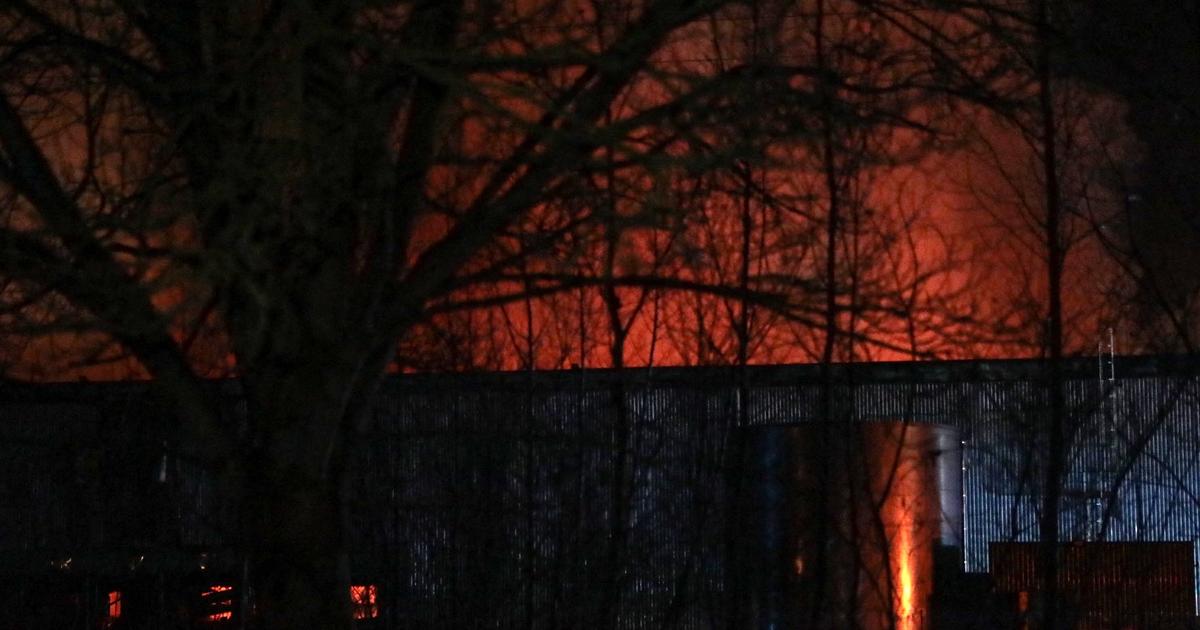Monday, January 16, a fire broke out in an industrial building rented by Bolloré Logistics, south of Rouen.
Some 8,000 lithium batteries were stored there.
The fire then spread to a nearby warehouse, containing around 70,000 tires.
From now on, the fire is contained, and the prefecture has not seen fit to take specific measures against pollution or the toxicity of the fumes.
But memories of Lubrizol immediately resurfaced.
This Seveso-classified chemical plant, already located in Rouen, had been the prey of a violent fire in September 2019. The thick smoke released by the fire had caused headaches and vomiting in some residents, and even eight light hospitalizations, but no deaths or serious injuries.
Should we worry today, as we did then, about the risks incurred by the population?
Hydrofluoric acid, powerful corrosive and decalcifying agent
The first analyzes carried out by the firefighters "
on the site and nearby
" are reassuring.
“
We looked for nitric oxide, hydrochloric acid and hydrocyanic acid, the rates are zero
,” assured firefighter colonel Rémy Weclawiak.
But a fire usually releases about 200 chemicals.
It is for this reason that farmers were banned from burning their waste in 2011. During these analyses, the investigators "
only look at about twenty chemical substances out of the 200
", tempers Paul Poulain*, specialist in industrial risks and impacts.
Read alsoTwo years after the Lubrizol fire in Rouen, health fears revived
One of the substances released from lithium is particularly toxic: hydrofluoric acid.
“
It is a powerful corrosive and a formidable decalcifying agent
”, explains the expert to
Figaro
.
"
It has a very strong affinity for calcium and fixes itself in the teeth, bones and blood
", he continues, adding that in the event of combustion and inhalation, it could cause "
pulmonary edema and malformations bones
”.
A precautionary principle too light?
The prefecture of Seine-Maritime is well aware of this risk, but evacuated it in a press release.
"
The combustion of lithium leads to a gaseous release of dangerous hydrofluoric acid near the hearth but which is not dispersed in the air at a distance from the disaster
", she explains.
“
No restrictions on the movement of people have been put in place and all activities can take place this Tuesday as usual
,” she added.
A communication regretted by Paul Poulain, which encourages more use of the "
precautionary principle
".
"
It's so complicated to look at the toxicity of a fire
," he sighs
.
And we don't know anything about lithium battery fires
."
The expert recommends that local residents "
stay at home and caulk the windows with damp towels
".
Especially since burning tires can also be toxic.
“
Tires have already been considered more polluting than exhaust gases, in certain studies
”, emphasizes Paul Poulain.
For the time being, analyzes are continuing to determine the possible toxicity of the plume of smoke which is heading in a southeasterly direction and which is visible for miles around.
*
Paul Poulain published
Everything can explode
at Fayard in 2021.

